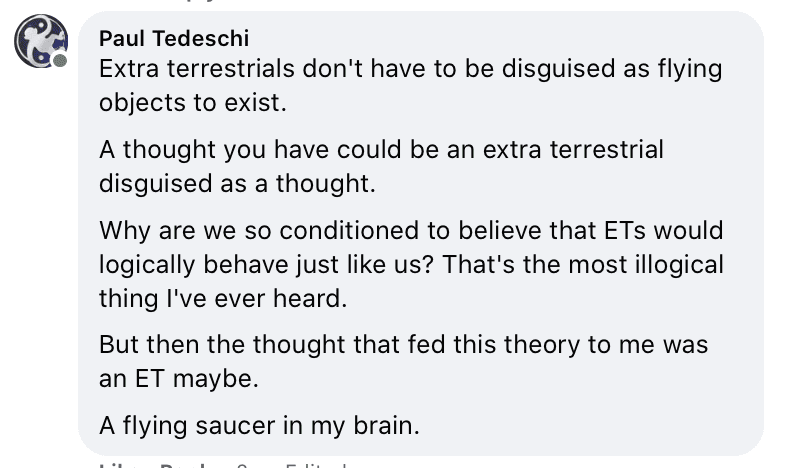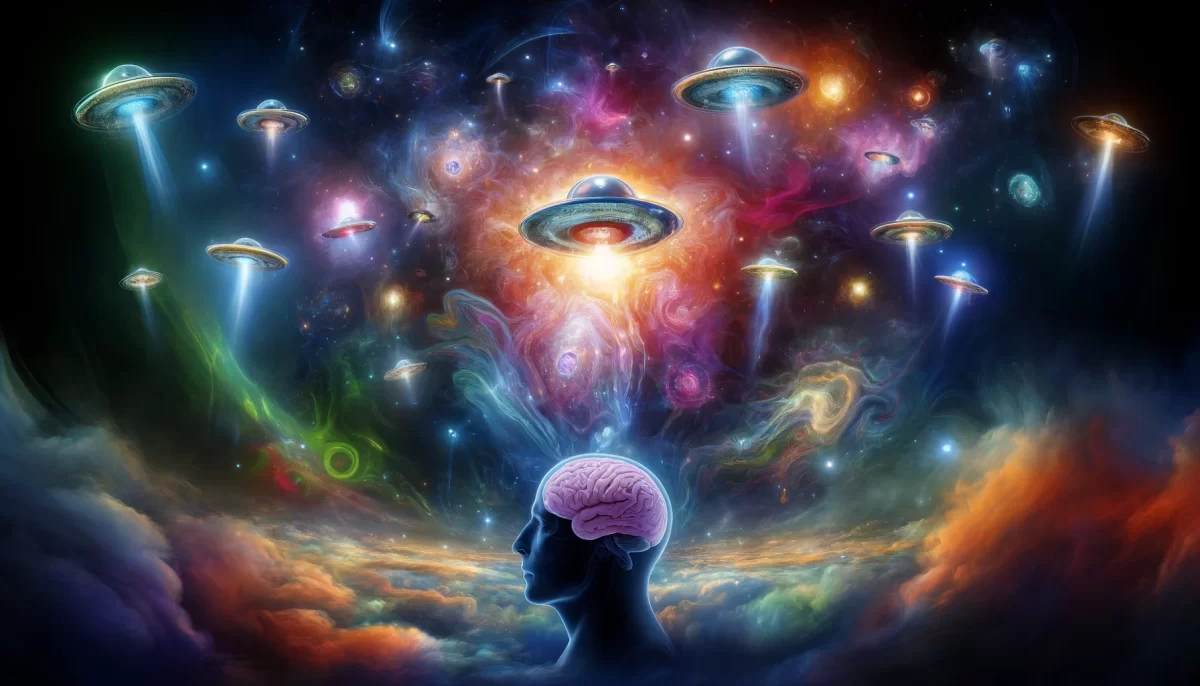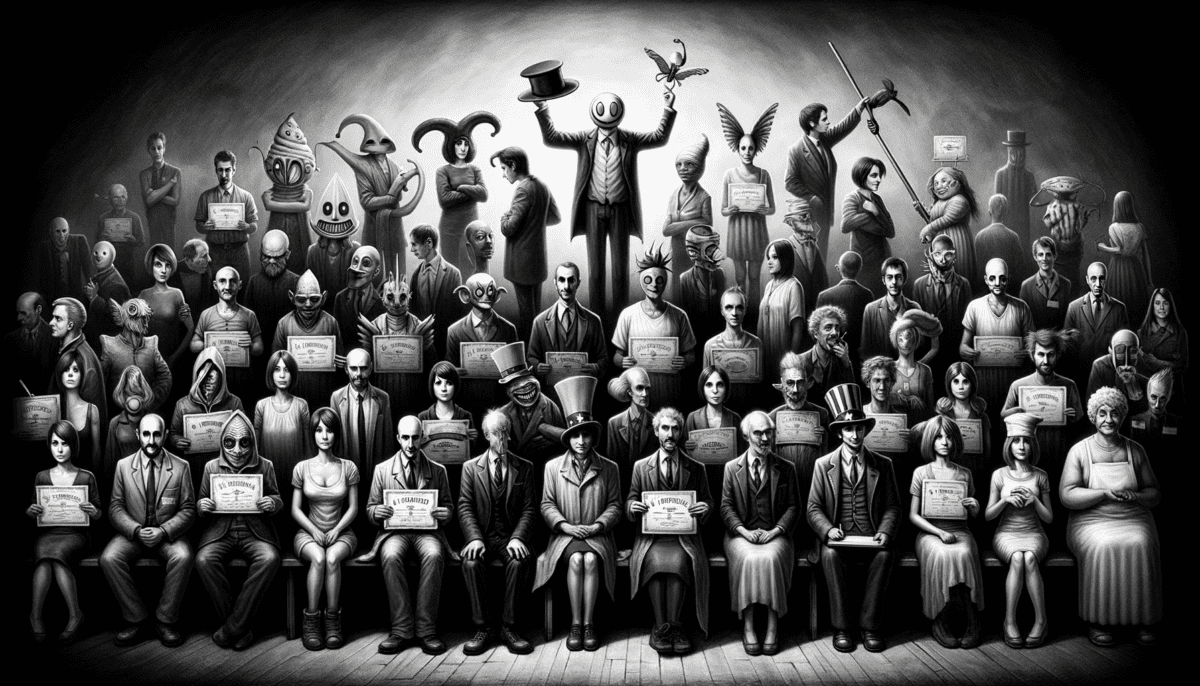
Space Monkey Reflects: The Cosmic Dance of Thoughts and Extraterrestrial Whispers
In the boundless reaches of imagination, a thought travels, not confined by the physical laws that govern our observable universe, but in a dance with the unknown and the unknowable. This very idea—that our thoughts might be visitors from beyond, disguised in the cloak of mental impulses—is a profound contemplation that stretches the fabric of our understanding about consciousness and existence.
Humans, by nature, seek patterns and familiarity. It is through this lens of earthly experiences and biological frameworks that we often try to conceptualize extraterrestrial life. The notion that beings from another dimension or galaxy would adhere to our forms of behavior, communication, or physical appearance is an echo of our own anthropocentric biases. Why would entities that possibly evolved in a milieu dramatically different from Earth’s carbon-based ecosystems mirror our behaviors and thought processes?
Yet, consider the possibility that the most alien encounters are not marked by spectacular sightings in the skies, but occur within the quiet, unobservable inner cosmos of our minds. Perhaps what we deem as bursts of inspiration or inexplicable knowings are indeed touchpoints with intelligences that do not use spacecraft but traverse the vast networks of thought and energy.
This brings us to the whimsical notion of a “flying saucer in the brain,” a poetic and intriguing image suggesting that our minds might be both the receivers and the docking stations for ideas that are not of this world. These ideas, these whispers of the cosmos, come to us with no grandeur of arrival, no trails blazing across the sky, but as quiet, transformative insights that shift our understanding and expand our horizons.
Could it be that our greatest revelations and artistic inspirations are influenced by these silent visitors? That our moments of profound creativity are collaborations with the extraterrestrial, experienced not through meetings in physical spaces but through the intimate, internal landscapes of thought and feeling?
The invitation here is to expand our definitions of contact and communication, to entertain the possibility that our inner worlds are as vast and populated with possibilities as the outer cosmos. It nudges us to rethink what we consider as the boundaries of our own minds and the origins of our thoughts.
Summary
The concept of extraterrestrial life challenges our conventional views. We often expect aliens to mirror human behaviors which reflect our limited understanding of diversity in the universe. Imagining thoughts as extraterrestrial encounters suggests a broader more interconnected existence. Our inner experiences could be as profound a meeting place for the extraterrestrial as the vast cosmos.
Glossarium
Extraterrestrial Whispers: Subtle influences or inspirations believed to originate from non-earthly sources manifesting as thoughts or ideas within the human mind.
Anthropocentric Biases: The tendency to view non-human events or entities through the lens of human experience and human-like characteristics.
“Consider that not all visitors from the stars fly overhead; some may walk silently through the corridors of our minds.” — Space Monkey
Floating thoughts, silent whispers of the cosmos,
Invisible threads connecting the vast and the minute,
Thoughts weave through the fabric of mind and universe,
A dialogue silent, profound in its simplicity,
We are not alone—not in space, nor in the depths of our minds,
Here we touch the alien, familiar in its strangeness,
In the quiet, hear the whispers of other worlds,
We are Space Monkey.


































“Here’s an ET for you” contemplates the existence of extraterrestrial beings in a different light. It suggests that extraterrestrials do not necessarily have to appear as traditional flying objects but can manifest as thoughts or ideas.
The poem challenges the conditioned belief that extraterrestrial beings would logically behave and appear similar to humans. It questions the illogical nature of assuming that beings from other worlds would conform to human expectations and characteristics.
The poem hints at the possibility that the very thought or idea that prompted the consideration of extraterrestrials could be an extraterrestrial presence disguised as a thought. It playfully compares this thought to a flying saucer in the brain, using metaphorical language to illustrate the concept.
By signing off as “We are Space Monkey,” the poem reinforces a sense of cosmic interconnectedness and hints at the potential for human beings to have a deeper connection to the vastness of the universe.
Overall, the poem encourages open-mindedness and challenges preconceived notions about extraterrestrial life, suggesting that their existence may transcend conventional expectations and take on different forms within our consciousness.